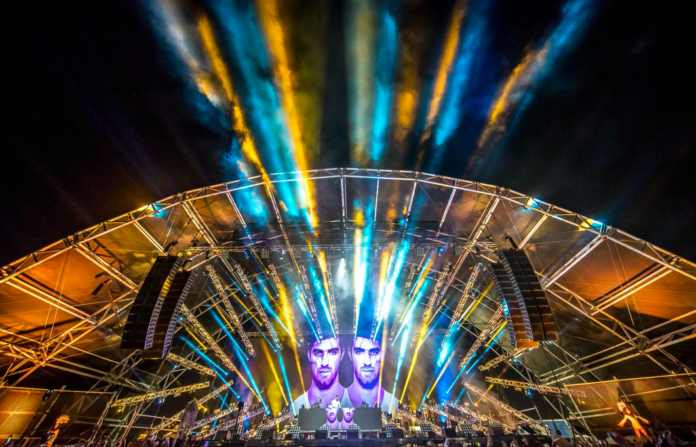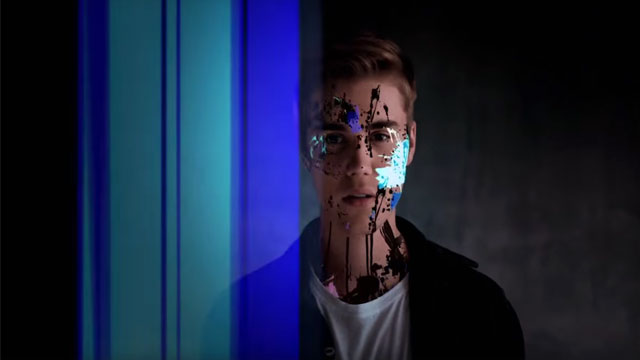Following Ultra Music Festival 2018, there is still lots of commentary to be made on the lineup of this EDM festival. The festival has been known to push boundaries by inviting artists who themselves push the boundaries of electronic dance music. Some acts this year, namely The Chainsmokers and The Wailers, fall into this category.
But Ultra Music Fest is a celebration of EDM and the intersection of EDM with other genres of music. Electronic music has a long history that includes acts like Depeche Mode, The Eurythmics, and Portishead. EDM is really the relative newcomer to the broader genre.
It’s actually pretty fitting that The Chainsmokers were back on the bill this year, since their career is experiencing some genre shifting as well.
The Chainsmokers
Are The Chainsmokers even traditional EDM anymore? That is a hot topic of debate right now. There is no doubt that the duo’s music is changing with recent releases (‘Sick Boy,’ ‘You Owe Me,’ and ‘Everybody Hates Me’), but are we now putting The Chainsmokers in a new genre?
While some purists may disagree, electronic dance music is a wide category that encompasses artists with many different dance tracks featuring a synthesized base.
If the true rules of EDM are repetition and the lack of live instrumentation, The Chainsmokers may be moving towards the the edge, but they’re still holding ground. They’ve added a live drummer (Matt McGuire) and a live pianist (Tony Ann), but these elements join rather than replace the synth-created track that supports the songs. Although parts of ‘Everybody Hates Me’ could be called slow, it’s still the kind of song clubs will play in its entirety to full dance floors—not to mention the numerous remixes of the song. There are more lyrics to contend with in the new songs, but the hooks still lodge in your head.
The Chainsmokers began making music around 2012. The name of the duo is rumored to have come from Alex Pall’s previous solo effort where he called himself Pall Mall. Pall was working on making a name for himself as a DJ in New York City when the duo’s manager, Adam Alpert, introduced Pall to Drew Taggart, a recent graduate of Syracuse University.
The DJ-Production duo first gained serious attention in 2014. During those days their music followed the traditional EDM tenants more closely. The songs were repetitive, obviously made for dancing; they were electronic to the max and they really emphasized bass and percussion. Things started branching out pretty quickly from there, however.
They previously played at the Ultra Music Fest in 2016, performing on the mainstage which was an early nod to their future success.
As far back as the release of the last album, Memories…Do Not Open, fans and critics were already questioning the band’s EDM purity. The New York Times once said the duo was “dismantling mainstream dance music from within.” Whether that was meant a compliment or not, it’s easy to see the greater point—maybe The Chainsmokers were never really traditional EDM to begin with.
Drew once told Wynn Magazine that “What has been really liberating is we haven’t really given our set any rules. I think that’s why our sound has changed so much. We let ourselves create whatever we’re feeling in that moment. We don’t worry about what we’ve done before or what people think about us. It’s just like ‘Hey, this is fun and exciting. Let’s do this!’ We just try to have fun with it. We keep the pressure off ourselves. In terms of creative freedom we feel pretty liberated.”
Ultra’s Status Maker History
Ultra Music Fest was founded in 1999 by Russell Faibisch and Alex Omes. When it began, it was a somewhat humble, day-long festival in modest Collins Park. Artists now considered legends in the EDM genre had pivotal moments on the Ultra stage.
The moments that easily spring to mind include Madonna’s infamous “How many people in this crowd have seen Molly?” moment during her announcement of Avicii’s set in 2012. There was also the last performance of Swedish House Mafia in 2013 and no fan in attendance is likely to forget it. Even Justin Bieber used the stage to redeem himself and regain his spot as America’s favorite in 2015.
While Ultra Music Fest grew, so did the world’s love for electronic dance music. By the mid-2000s, electronic music began a slow but steady growth in popularity that now lands it on the threshold of ‘going mainstream.’
This led to an important transition period for Ultra Music Festival. As the festival had always been a niche event catering to a unique subculture, it had to adjust itself to also appeal to also the masses.
This lead to expansion and the movement of the festival’s location. Ultra became a three-day festival in 2011, packing in more performers than before. Then, the managers behind Ultra and Carl Cox dreamed up The Resistance stages for 2015. That move it all but guaranteed enough space to showcase new and upcoming talent as well as epic collaborations during the festival.
As the time ticks onward, Ultra Music Fest is embracing the widening trends in the EDM genre. For example, superstar DJs have risen out of a previously underground scene. They now regularly collaborate with pop music stars that take songs to the top of electronic and mainstream charts.
Today, Ultra Music Fest is a place for both new fans and veteran festival goers to discover the music and lifestyle of EDM. It’s a place to hear fresh new acts, genre-bending artists, and legends in the prime of their careers.
Read our last article on The Chainsmokers here!
Connect with The Chainsmokers on Twitter and Instagram!






